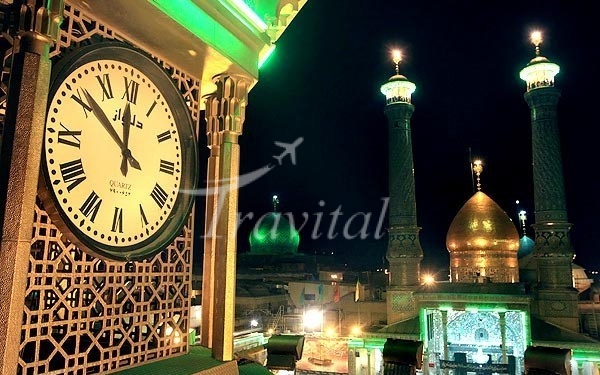Rey (Shahr-e Rey)



Overview
Rey or Ray also known as Rhages and formerly as Arsacia, is the capital of Rey County in Tehran Province of Iran, and the oldest existing city in the province. Rey today has been absorbed into the Greater Tehran metropolitan area. Rey is connected via the Tehran Metro to the rest of Tehran and has many industries and factories in operation. Limited excavations of what was not bulldozed began in 1997 in collaboration with the Iranian Cultural Heritage and Tourism Organization (ICHTO), the Department of Archaeological Sciences of the University of Bradford and the Department of Archaeology of the University of Tehran. Note on spelling: According to the Iranian Chamber Society, the correct spelling of the city in both English and Persian is Ray, though variations in spelling also exist. Things to Do in Rey Shah-Abdol-Azim shrine: The shrine contains the tomb of Abdol Azim Hasani a fifth generation descendant of Hasan ibn Ali. Cheshmeh-Ali hill with a spring: In 1933-6 Cheshmeh Ali hill was excavated by archaeologists from the Boston Fine Arts Museum and the University Museum at the University of Pennsylvania headed by Erich Schmidt, which resulted in the discovery of 7,000-year-old artifacts. Some of the discovered objects are displayed at museums in Iran, Chicago, and Philadelphia. Tughrul (Toghrol) Tower: Constructed under the Seljuqs at the order of Tughrul Beg in 1140, once he transferred the capital city from Nishapur to Ray. The tower is 20 meters high and the surface of its exterior is divided into 24 sections, which besides manifesting beauty and durability, symbolizes the figures of constellation as well as a 24-hour length of time (a day and a night). Shah Abbasi Caravanserai: One of the ancient residential and commercial complexes, which was used as a lodging by traders and located on the shrine street, close to the Bazaar. It comprises four verandas and is surrounded by stones all around, which used to serve as a market place where goods and commercial products were presented and sold by traders. Ray Bazaar: Located to the north of Shah-Abdol-Azim's shrine, it comprises two sections and a crossroad is formed at their intersection. It has long been a center for the sale of spices, traditional herbs, and commercial goods which were imported by traders via the Silk Road. The structure of the bazaar is constructed from plaster, brick, raw mud brick and mud. It dates back to the Safavid era and is approximately 500 years old. Anyanaj Tower: An octagonal tower known as Naqareh Khaneh stands on the slopes of Tabarak mountain. A cellar is linked to the tower from underneath through a vestibule erected outside. The tower, which is constructed by stone and plaster and decorated by brickwork and zigzag vaults, dates back to the Saljuk era. Gebri Crypt: Zoroastrians lived in this area, who used to leave the corpses of the dead in the open air usually on a structure known as a Dakhma or Tower of Silence. According to their traditions, once the flesh had decayed, the remaining bones would be buried. The ancient Zoroastrians disapproved of contaminating the earth (Zam) with a corpse through regular burial, or contaminating fire (Atar) through cremation (An afront to Armaiti and Asha respectively) due to the belief that corpses are nasu (unclean and impure). Gebri crypt was built as a high circular structure, six meters high, which was constructed by stone and mortar. It dates back to the 1st millennium BCE, around 3,000 years ago and was earlier called by different names, such as Khamoushan tower, Ostvaran, Ostkhan-ran, Marg (Death) tower and Sokout (Silence) tower. Paintings of Monarchs on Ashkan Mountain: At the order of Fath Ali Shah Qajar, a slide was erected on the Ashkan mountain as a sliding and recreation tool for the monarchic family. At the southern slopes of the mountain, a rough image of the Sassanid kings has been carved on a rock, which was leveled for this purpose. The image was left incomplete. Later at the order of Fath Ali Shah the image was erased to be replaced by his own portrait, while he had a crown on head and a spear in hand targeted at a lion.
Rey (Shahr-e Rey) on Map
See more in Rey (Shahr-e Rey)
Rey (Shahr-e Rey) Hotels
Your Travel Journey Starts Here
Sign up and we'll send the best deals to you

